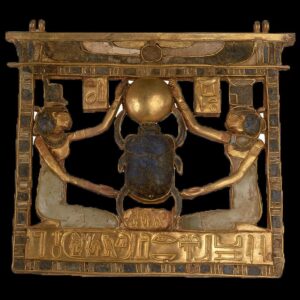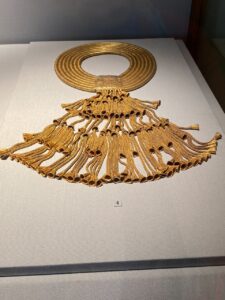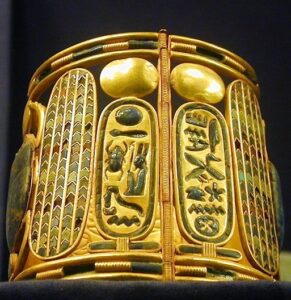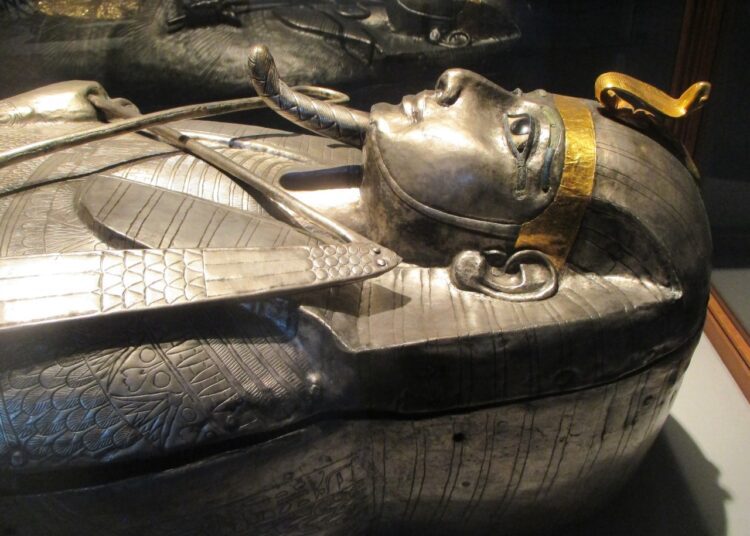Her eyes gleaming, a young woman looked at the golden fingers on display and said to her fiancé, “Look at these gold fingers! Why didn’t we imitate our ancestors to make jewellery like this? I need one.”
The couple was among visitors to the two recently opened halls at the Egyptian Museum in Tahrir, downtown Cairo.
On display in the new halls are exhibits from Tanis (San el-Hagar), a town in the north-east Nile Delta.
Between 1939 and 1946, a French archaeological team unearthed a vast ensemble of royal and elite burials at Tanis. Led by Pierre Montet, the team found 15 burials, of which some were intact, of pharaohs and high officials of the 21st and 22nd Dynasties. Their funerary equipment equals that of Tutankhamun.
Sabah Abdel Razek, Director General of the Egyptian Museum, told the Egyptian Mail that because the discoveries of Tanis coincided with WWII, they were overlooked and kept in the museum stores. They are now on display for the first time in the two halls in place of the Tutankhamun treasures.
The fingers and toes of the mummy of Wendjebauendjed, an ancient Egyptian general and high priest during the reign of pharaoh Psusennes I (c.1039-991 BC) of the 21st Dynasty, were sheathed in gold to imitate the imperishable flesh of the gods, which granted them divine power. Five rings were placed over the finger coverings.
The tomb of Pharaoh Psusennes I is the oldest tomb discovered in the royal necropolis of Tanis. He reigned at the beginning of the Third Intermediate Period founding the 21st Dynasty’s new capital at Tanis.
Psusennes I’s tomb held an extraordinary collection of valuable objects. Only items able to withstand the humidity of the Delta have survived, including stone and silver sarcophagi, the golden mummy mask and sheath, precious jewellery and tableware, weapons and shabtis (small mummy figurines).
His funerary mask shows an idealised image of the dead king’s face, forever young. He was, in fact, an old man when he died. The mask is made of two sheets of embossed gold leaf, overlaid and held together by five twin-shafted fasteners. The eyes, the eyebrows and the false beard straps are inlaid.
The quality of the work demonstrates that Egyptian goldsmiths were masters of the most refined techniques.
A pair of gold sandals is on display. These sandals were placed on the feet of Psusennes I. The soles extend and curl upwards beyond the toe, and a finely engraved rosette decorates the heel. They represent comfort and wealth, and were intended to magically endow the deceased king with a divine gait. Made of thin sheets of gold soldered together, the footwear is modelled on real leather sandals.
To protect the mummy, it was encased in three protective layers. A silver human-shaped coffin was placed inside a black granite sarcophagus of the same shape, which was inserted into a rectangular red granite sarcophagus. The outer lid is decorated with an image of the king.
The royal corpse was adorned with a gold funerary mask, gold fingers, jewellery and many amulets.
Psusennes I’s tomb contained one of the most remarkable collections of Egyptian goldsmithing from the beginning of the Third Intermediate Period. More than 20 items of precious tableware reveal the importance attached to ritual libations.
Objects for personal grooming are relatively rare in funerary equipment of the Third Intermediate Period. On display is a mirror made of copper alloy. It is the only one discovered in the royal necropolis of Tanis.












Discussion about this post